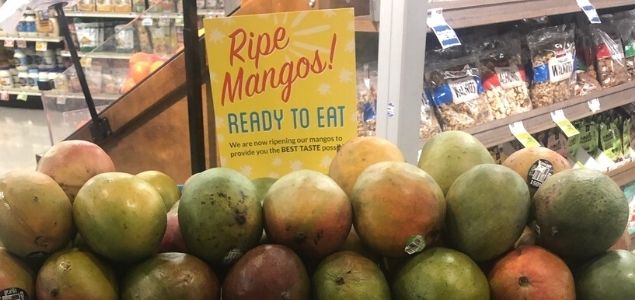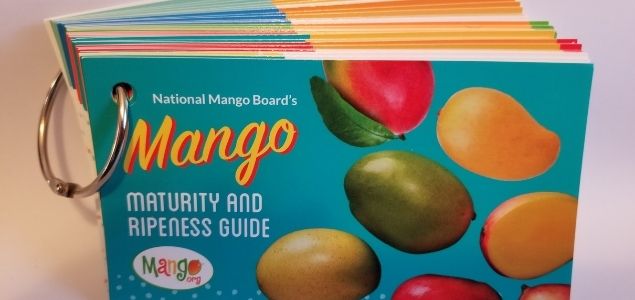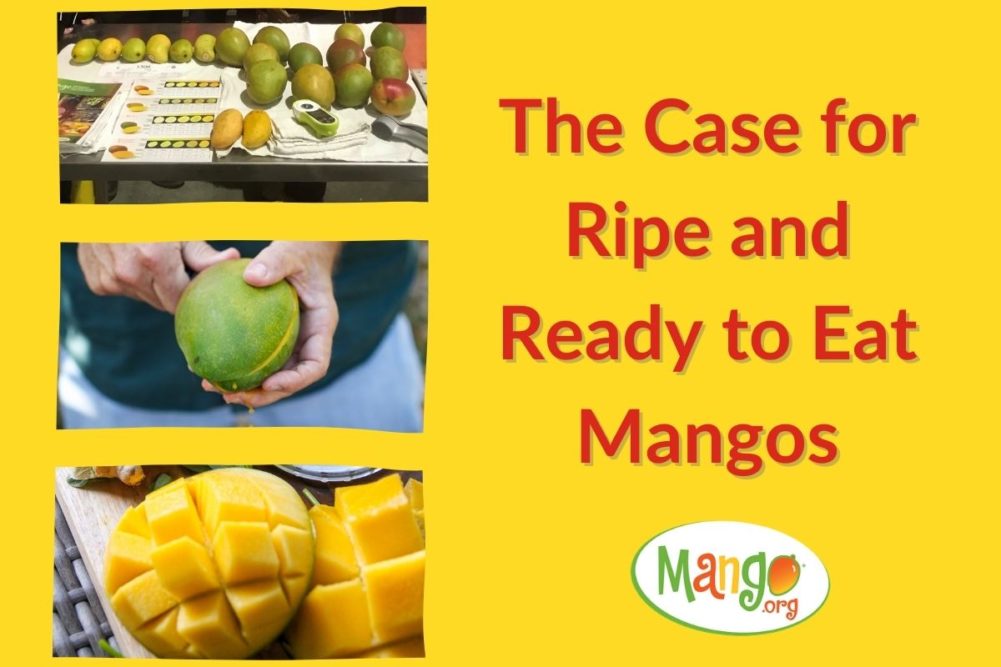There’s nothing better than a perfectly ripe and juicy mango. Think of the flavors, the texture, and the aroma. It’s no wonder more and more consumers are opting to experience the deliciousness of a ripe and ready to eat mango. Since 2005, mango consumption per capita in the United States has grown 93 percent from 1.88 pounds per person in 2005 to 3.63 pounds per person in 2020. This increase in mango consumption over the last few years is a clear indication of what consumers are looking for, and that is a ripe and ready to eat mango.
So how do we continue growth and bring more consumers an authentic mango experience? The National Mango Board (NMB) in partnership with University of California-Davis has conducted in-store consumer tests indicating consumer acceptance doubles, increasing from 39 percent for mature/unripe mangos to 87 percent for the same fruit that is ripe and ready to eat. A ripening, or pre-conditioning, program has had positive impacts on consumer satisfaction and sales of ripened fruit that helps lead to repeat sales.

There has long been a misconception that focusing on less ripe, greener fruit improves shelf-life. However, that strategy does not align with consumer preference. Just as ripening programs have positively impacted the world of bananas, avocados, pears, kiwis, and other climacteric produce (produce that continues to ripen after picked), similar practices can be applied to mangos. Creating a ripening or conditioning program helps to put the best possible quality fruit in front of the consumer, increases product turns, and ultimately creates the optimal level of consumer satisfaction. Ripe and ready conditioning has changed the game for mangos.
Education of the ripening process and its outcome is paramount to both retailers and consumers. Establishing the importance of the “world’s most popular fruit” to both staff and your customers by moving mangos out of the exotic section and into the mainstream is essential. Clear signage indicating your mangos are ripe and “Ready to Eat” will also call more attention to the fruit and to the new level of care and handling. Coupling that with signage related to selection (color is not an indicator of ripeness), cutting, or usage, offers consumers with benefits and advantages of purchasing a ripe mango, spurring impulse purchases.

Understanding what makes mangos different and what old habits to break is crucial to creating a successful mango experience. For example, stores may opt to increase the frequency of ordering to help keep shipments fresh, rather than keep mangos on the same ordering frequency as other commodities. By doing this, the fruit you receive from the suppliers may be softer than what you’re accustomed to, so additional care is needed when handling and building displays.
Factors to consider when implementing a ripening program include establishing mango varieties to carry and ripen, mango ripeness stages, proper backroom and display temperatures, increased footprint and high visibility location within the department, order frequency and rotation system, and a plan for ongoing staff communication and training.
Another factor of note is moving mangos out of backroom refrigeration and next to the bananas to ensure that chilling damage does not occur. Increasing order frequency to keep product fresh and ensure better rotation is another factor to be considered.
The NMB offers mango display bins to retail partners each year. These bins are colorful and fun with eye-catching graphics with several options available for messaging, including ripening. “We’ve observed retail partners who take advantage of the bin display program see at least a 30 percent lift in sales volume,” said Tammy Wiard, senior marketing manager for the NMB. “Additionally, for summer, we have some really fun grilling assets and recipes for our retail partners to use and share with their customers.” In addition, the NMB has several point-of-sale materials related to ripe mangos available on its website. For more information on how to obtain these materials, please contact your NMB retail account executive.

The NMB’s research team and partners have developed a five-stage Mango Maturity and Ripeness Guide for the six most common commercial mango varieties sold in the United States. This guide provides internal flesh color, corresponding ranges for SSC (brix measurement), and firmness for each stage of mango ripeness. For hard copies of this helpful tool, please contact your NMB retail account executive. Also, the Mango Postharvest Best Management Practices Manual, available in English and Spanish, is another great resource.
For any questions about mangos, please contact the NMB.


